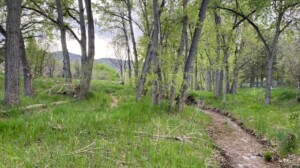Established in 1971 and inaugurated on its U.S. side by First Lady Pat Nixon, the United States–Mexico border-straddling Friendship Park is a singular public space in North America: an amity-exuding binational landscape where residents of both countries can come together (from Imperial Beach in San Diego on the U.S. side and the borough of Playas de Tijuana on the Mexico side) and converse—and even touch fingertips— in-person. Initially, a simple barbed wire fence cleaved the park, making cross-border interaction easy at the rather petite—it’s just a half-acre–space.
In the mid-1990s, however, the U.S. Border Patrol ramped up security measures along the San Diego–Tijuana border, including erecting new fences and limiting access in what was a major setback to families who relied on the park as a vital point of interaction with friends and loved ones without needing to cross the border. Still, people flocked to the park up until just before the COVID-19 pandemic when the U.S. side of the park was completely shuttered. In 2021, The Cultural Landscape Foundation included Friendship Park on its annual Landslide list of at-risk cultural landscapes.
The park now faces another major—and potentially fatal—blow with work advancing on a pair of 30-foot-tall barrier walls that activists believe could effectively bring an end to what’s left of the already altered Friendship Park. One of the new towering bollard barriers will replace an aging, corrosion-damaged fence already in place along the border. Replacing the structure was a taller, more resilient barrier—one that does not include gates allowing pedestrian access to a secondary fence where the park’s cross-border interactions occur—originally a Trump-era project carried over to the Biden administration. Biden ordered a freeze on all Trump border wall projects when first taking office; some have since resumed, including the replacement project on the U.S. Side of Friendship Park.
As further detailed by the San Diego Union-Tribune local community members, led by the Friends of Friendship Park Coalition and joined by 15 members of Congress, are urging U.S. Border Patrol to bring construction to a pause for 120 days so that the impacts of the work on the beloved park can be better understood. A group of activists held a rally outside of Border Patrol headquarters earlier this week.
“These two 30-foot walls extended across the face of this historic location will change the face of Friendship Park for decades to come,” the coalition’s John Fanestil explained in a statement shared by the Union-Tribune. “It represents in our view a desecration of a historic location on the U.S.-Mexico border. It will discourage public use of this space in the United States. And in our view, if completed, in the current fashion, will in effect close Friendship Park.”
Thanks to ongoing pressure from community members there now does appear to be a spot of good (or at least better) news. As reported by local NBC affiliate 7 San Diego, U.S. Customs and Border Protection (CBP) confirmed that it will adjust the design of the planned outer fence to include a gate so that park visitors can once again convene face-to-face with friends and family located on the Mexican side. The height of the structures will remain.
“Upon completion of the San Diego Friendship Circle project, including the replacement of a secondary barrier with a pedestrian gate in this area, we will identify opportunities to provide the public with access once it is operationally safe to do so,” explained the CBP in a statement shared by The Guardian, which recently published an in-depth exploration of Friendship Park and the ongoing grassroots effort to reopen it with regular access. (It should be noted that the side of the park located in Mexico is open and thriving.)
“While these opportunities will continue to need to be based on other US border patrol operational requirements, the replacement construction project will not be an impediment to potential opportunities for future access in this location,” added the CBP.
While the adjustment to include a gate is welcome news, there remain significant worries about public access to and staffing at the entry point when the project is ultimately completed. Opponents of the project are also concerned about the foreboding height of the new barriers and their impact, both visually and spiritually, on the park.
“I am against the fence entirely,” Friendship Park supporter Aydin Abudawas told 7 San Diego. “I don’t think we need a 30-foot wall blocking us from other citizens of Mexico and citizens of other South American countries.”
While Friendship Park remains a wholly unique space along the U.S.–Mexico border, there are plans for a similar, albeit much larger, park stretching over 6 miles along the Rio Grande/Rio Bravo River between Laredo, Texas, and Nuevo Laredo, Mexico.











